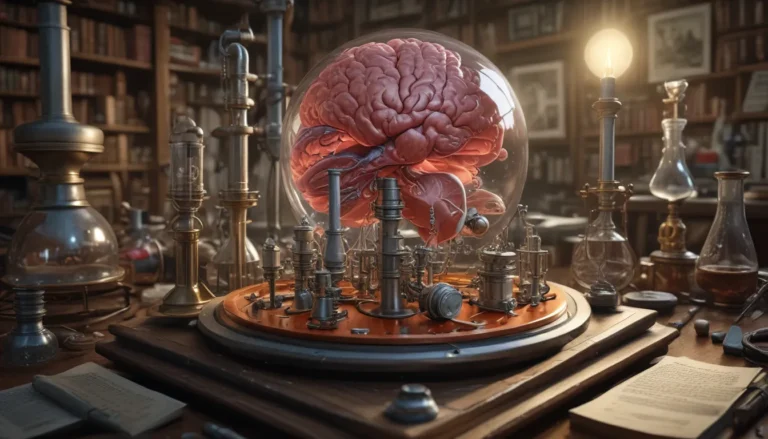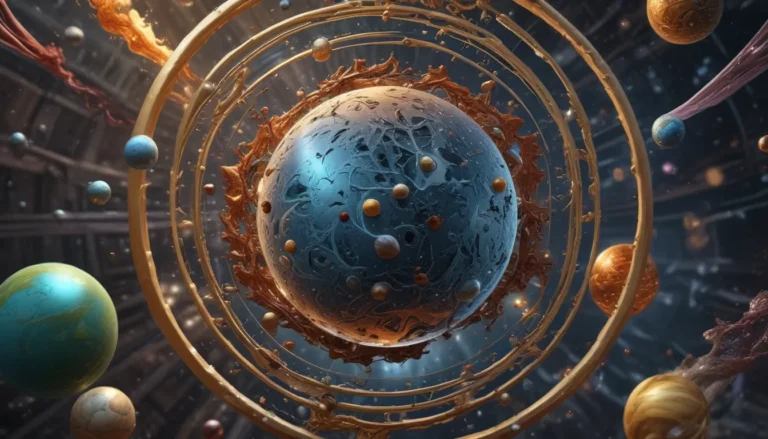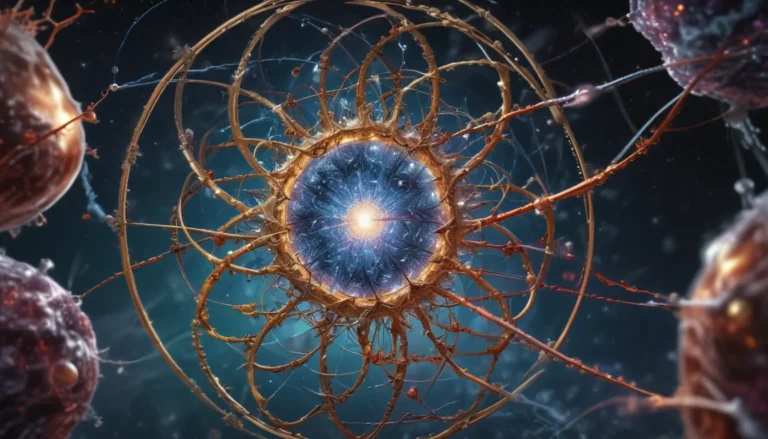A Note About Images: The images used in our articles are for illustration purposes only and may not exactly match the content. They are meant to engage readers, but the text should be relied upon for accurate information.
Curie’s Law of Magnetism, a fundamental principle in physics discovered by Marie Curie, sheds light on the magnetic behavior of materials in correlation with temperature. In this article, we will delve into 13 astounding facts about Curie’s Law of Magnetism that will not only enrich your knowledge of magnetic materials but also showcase the brilliance of Marie Curie’s contributions to the field of physics. From its inception to its practical applications, these facts will amaze and inspire you, illustrating the profound impact of this law across various scientific disciplines.
So, let’s embark on an exploration of the captivating world of Curie’s Law of Magnetism and unearth the remarkable insights it offers into the behavior of magnets.
Key Insights Into Curie’s Law of Magnetism
-
Curie’s Law of Magnetism elucidates how materials respond to magnets at differing temperatures, akin to a rulebook that demystifies the magnetization process under varying thermal conditions.
-
Understanding Curie’s Law facilitates the development of enhanced magnetic technologies, enabling the creation of improved magnets for applications ranging from smartphones to MRI machines.
The Relationship Between Temperature and Magnetization
Curie’s Law of Magnetism articulates the connection between temperature and magnetization within a material. The law stipulates that the magnetization of a material is directly proportional to the applied magnetic field and inversely proportional to the temperature, offering a foundational comprehension of magnetic material behavior across different temperature ranges.
The Legacy of Pierre Curie
Physicist Pierre Curie, in collaboration with Marie Curie, was instrumental in advancing the field of magnetism. Pierre Curie formulated Curie’s Law in 1895 following extensive research on magnetic materials, laying the groundwork for further exploration in the realm of magnetism.
Application to Paramagnetic Materials
Curie’s Law chiefly applies to paramagnetic materials—substances weakly attracted to magnetic fields such as aluminum, platinum, and oxygen—contributing to a deeper understanding of their magnetic characteristics.
Mathematical Representation of Curie’s Law
Curie’s Law can be mathematically expressed as M = C/T, where M denotes magnetization, C signifies the Curie constant, and T represents temperature. This equation reveals the inverse correlation between magnetization and temperature.
Wide Temperature Range Applicability
Curie’s Law remains valid across a broad spectrum of temperatures, from high temperatures where magnetic moments are randomly oriented to low temperatures where moments align unidirectionally.
Insight into Material Behavior Near the Curie Temperature
Understanding Curie’s Law provides valuable insights into the behavior of magnetic materials in proximity to the Curie temperature—the critical point at which a material undergoes a magnetic phase transition, losing its magnetic properties.
Diverse Curie Temperatures Across Materials
Distinct materials exhibit varying Curie temperatures, demarcating the temperature at which their magnetic properties undergo a transformation. For instance, iron possesses a Curie temperature of 770°C, contrasting with nickel’s Curie temperature of 358°C.
Applications in Magnetometry
Curie’s Law serves as a foundational element in magnetometry—a discipline focused on measuring magnetic fields and properties—contributing essential insights for the understanding and quantification of magnetization in diverse materials.
Utilization in Engineering and Material Science
With applications spanning electrical engineering, materials science, and solid-state physics, Curie’s Law aids in the design and comprehension of magnetic materials employed in electronics and various technological innovations.
Pivotal Role in Magnetometry
Curie’s Law is a cornerstone of magnetometry, which involves the measurement of magnetic fields and properties, facilitating the assessment and analysis of magnetization in different materials.
Statistical Physics Foundation
Built upon principles of statistical physics, Curie’s Law accounts for the statistical distribution of atomic moments in magnetic materials, elucidating the behavior of these systems on a macroscopic scale.
Advancements in Magnetic Technology
Grasping the fundamental tenets underlying Curie’s Law enables researchers to explore novel materials, innovate magnetic technologies, and advance fields like data storage, energy production, and medical imaging.
Conclusion
In essence, Curie’s Law of Magnetism emerges as a compelling concept within the realm of physics, elucidating the intricate relationship between magnetic materials and temperature. Named in honor of the illustrious physicist Marie Curie, this law underscores the direct proportionality between a material’s magnetic susceptibility and its temperature. Mastery of Curie’s Law is pivotal in various applications across modern technology, from magnetic storage devices to electric motors, fostering optimization in these technological spheres. Moreover, Curie’s Law continues to propel research and innovation in the domain of magnetism, paving the way for novel materials and the exploration of unique physical phenomena.
Frequently Asked Questions
Q: Who discovered Curie’s Law of Magnetism?
A: Curie’s Law of Magnetism was uncovered by Marie Curie, a distinguished physicist and the first woman to attain a Nobel Prize.
Q: What is the relationship between magnetic susceptibility and temperature?
A: Curie’s Law posits that the magnetic susceptibility of a material is directly linked to its temperature, with susceptibility escalating as temperature rises.
Q: What practical applications does Curie’s Law of Magnetism have?
A: Curie’s Law finds utility in various practical applications, including magnetic storage devices like hard drives, electric transformers, and MRI machines employed in medical diagnostics.
Q: How does Curie’s Law contribute to the creation of new materials?
A: Serving as a foundational principle in material design, Curie’s Law enables scientists to craft materials with specific magnetic properties by grasping the interplay between temperature and magnetic behavior.
Q: Can Curie’s Law be applied to all material types?
A: Curie’s Law is most pertinent to paramagnetic materials possessing weak, transient magnetic attributes, diverging from its relevance to diamagnetic or ferromagnetic materials.
Dive into the enthralling world of physics and unravel more captivating facts that illuminate the mysteries of magnetism and its impact on our universe. Explore the intriguing relationship between temperature and chemical reactions, pivotal in natural processes and technological advancements, shaping our world in unforeseen ways.
Enhancing Your Understanding
Our dedication to furnishing reliable and engaging content remains steadfast, driven by the desire to deliver enriching insights for our readers. Each fact on our platform originates from contributions made by individuals like you, offering a diverse array of perspectives and information. Rely on our steadfast commitment to quality and authenticity as you embark on a journey of exploration and learning with us.






